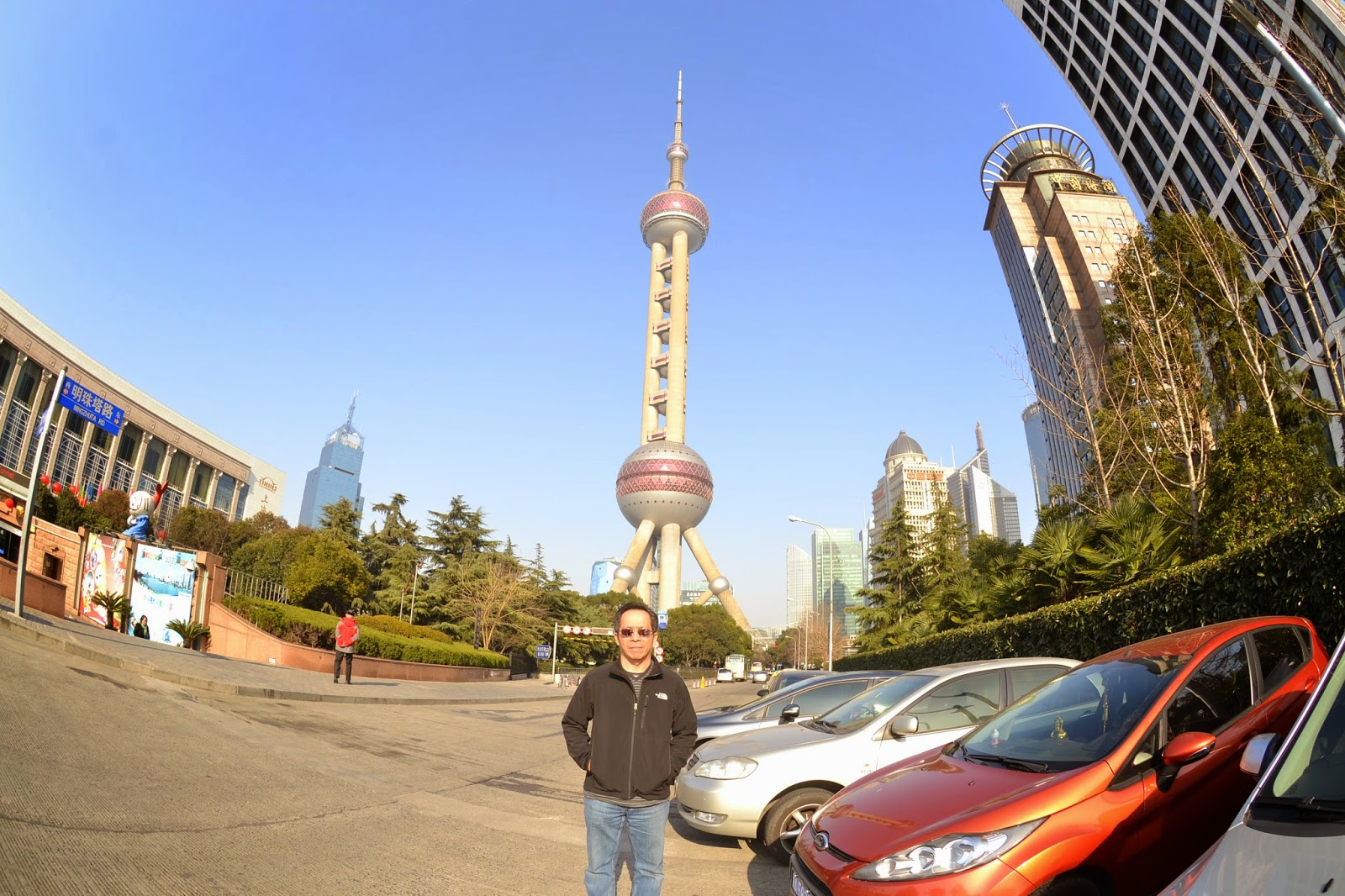Entering Shanghai, we would immediately be overwhelmed by its colors, its people, its futuristic skyscrapers and its diversified lifestyles. The very first thing we could see from a distance away were the 600+ meter Shanghai Tower and the Oriental Pearl TV Tower, with its distinctive pink spheres.
 Shanghai is situated on the estuary of Huangpu River. It serves as the most
influential economic, financial, international trade, cultural, science
and technology center in East China.
Shanghai is situated on the estuary of Huangpu River. It serves as the most
influential economic, financial, international trade, cultural, science
and technology center in East China. It also is a popular destination for visitors to sense the pulsating development of this country.

In addition to its modernization, the city's multicultural flair endows it with a unique mysterious attractiveness. Here, one can find the perfect blend of cultures, the modern and the traditional, and the Western and the Oriental.

New skyscrapers and old Shikumen, a traditional Shanghainese architectural style combining Western and Chinese elements that first appeared in the 1860s, together draw the skyline of the city.
Western customs and Chinese traditions intertwined and formed the city's culture, making a visitor's stay truly memorable.

The Huangpu River reminded me of the Thames River in London. The water is dark in color and I did see some parts where it looked very polluted, but the river plays a huge part in the identity of Shanghai and it provides beautiful backdrops for photos. It is a shame that just like many cities in China themselves, this river has gotten so polluted.

The Huangpu is the largest river in Shanghai. It divides the city into two regions: Pudong to its east and Puxi to the west. Dong and Xi mean 'East' and 'West' respectively in Mandarin Chinese.

First, we went to see if we could book up a river cruise at night, but it was pretty expensive. On this Friday night, it was also very crowded with all of the pushing and shoving from hoards of Chinese tourists to get on board then to fight some more in order to have a good place to stand ...

We should have skipped. But we couldn't pass this one of a lifetime opportunity, so there I paid almost $60.00 for two tickets for a mere 30 minute ride on the Quanqiu Tong ship, one of the large fleet of luxury ships on Huangpu River. The name means 'the Crystal Palace on the River' due to its transparency. This ship contains the most glass in comparison with other cruise ships in the area.

This ship has everything: Bar Counter, Sunny Deck, Banquet Hall, Conference Room, Central Air Conditioning, Television etc. They serve light meals and coffee, as well as soft drinks on board. Believe it or not, there were a bunch of passengers gathered around tables inside with meals and drinks on their hands ignoring the most important thing on this trip: beautiful scenery of Shanghai at night.

The temperature once again dropped back into the low single digit, and with the wind blown across the bow, where we stood, made my whole body shaking uncontrollably.

Shanghai's scenery at night is so lively and beautiful. The ornate classical and modern buildings take on a new and exciting look as they were lit up by an abundance of colored lights. Looking across the Huangpu River to the Oriental Pearl TV Tower and Jinmao Tower is a magical sight. It's better looking than the Thames River and its banks with lots of people and sizzling businesses.
Walking westward along Nanjing East Road, we quickly reached the famous Nanjing Road Pedestrian Street, the gaily illuminated shops were an exciting backdrop to the cheerful crowds that came here after dark to enjoy the carefree atmosphere, where it is possible to pick up a bargain or enjoy a tasty morsel to eat. One can find plenty of tea houses here as coffee shops in Europe or in the U.S. Surprisingly, many of them open 24 hours a day 7 days a week.

Apart from enjoying a lone taste of tea, We saw customers sit around and play cards, chess or just chat loudly. Fashionable entertainments are favorites with young people. When night falls, Shanghai bathes in the light of various entertainment venues. Nightclubs, Karaoke, discos, tea and coffee houses are all very crowded.
 We finally have to say goodbye to Shanghai and China. We got back to our hotel late at night after a long evening full of fun. Tomorrow morning we were heading back home to prepare for our traditional shopping for our Lunar New Year, the Year of the Snake.
We finally have to say goodbye to Shanghai and China. We got back to our hotel late at night after a long evening full of fun. Tomorrow morning we were heading back home to prepare for our traditional shopping for our Lunar New Year, the Year of the Snake.On the way to the airport, I took a picture of a scooter filled with live chicken, probably on the way to the market early in the morning.










































